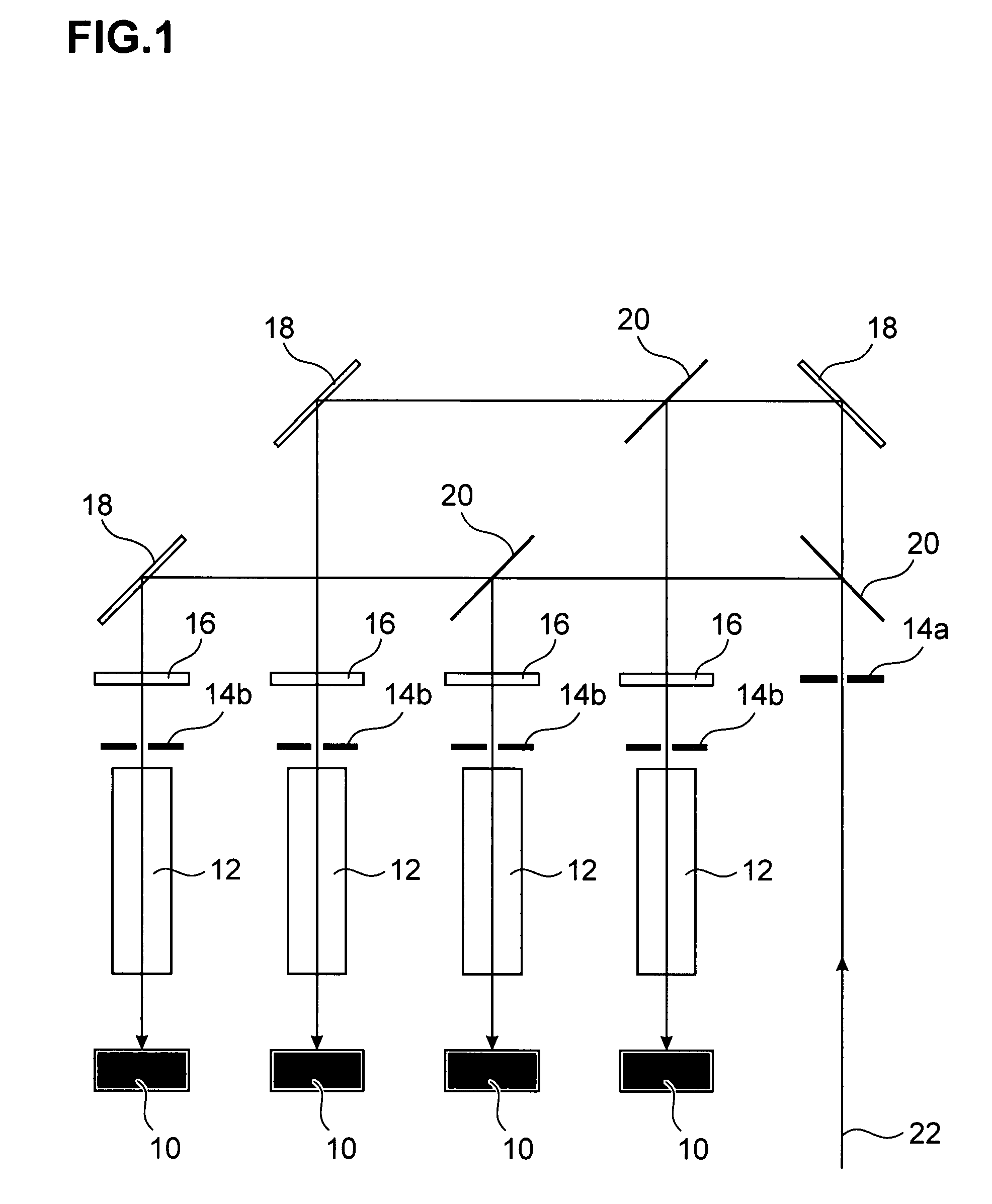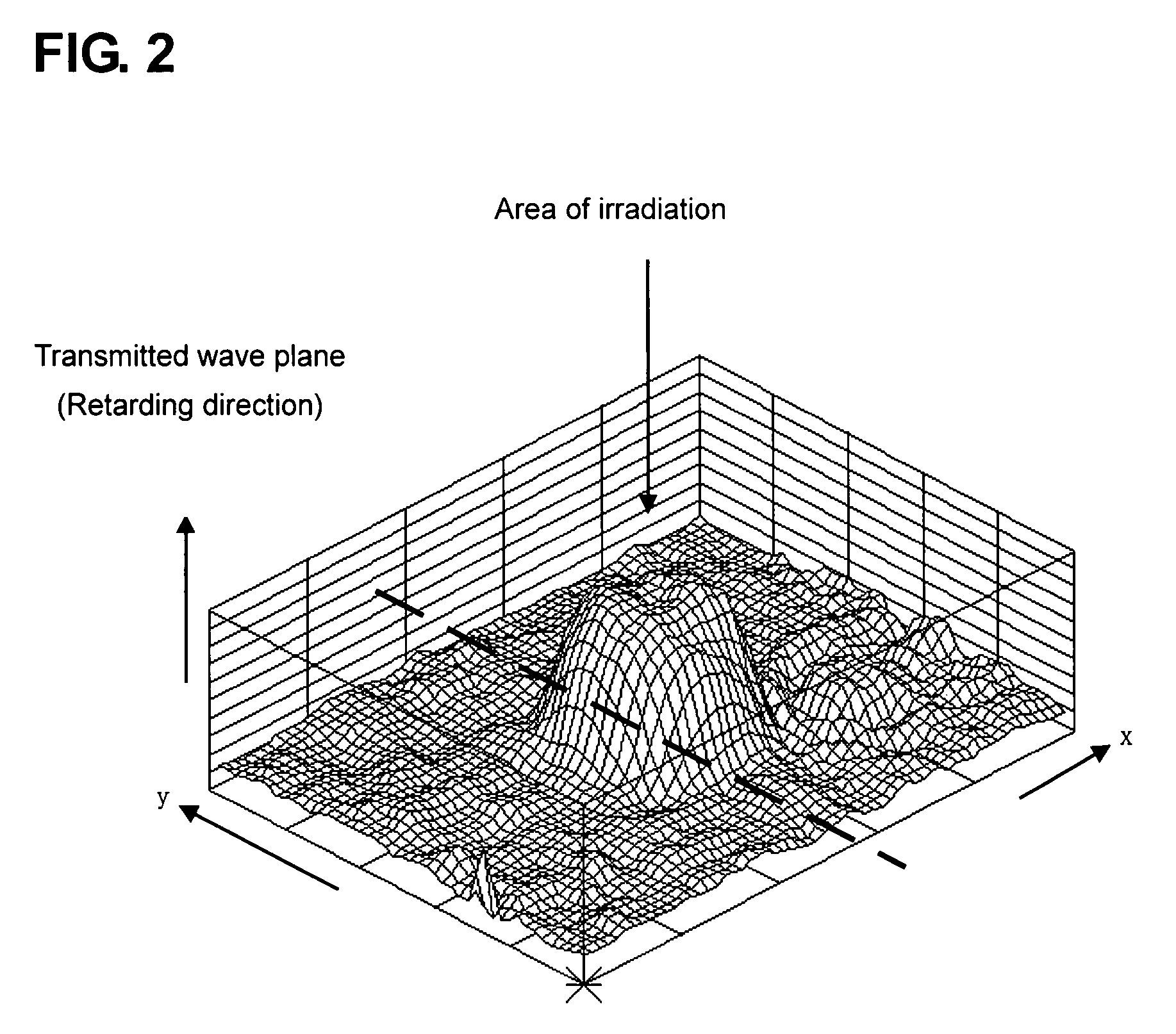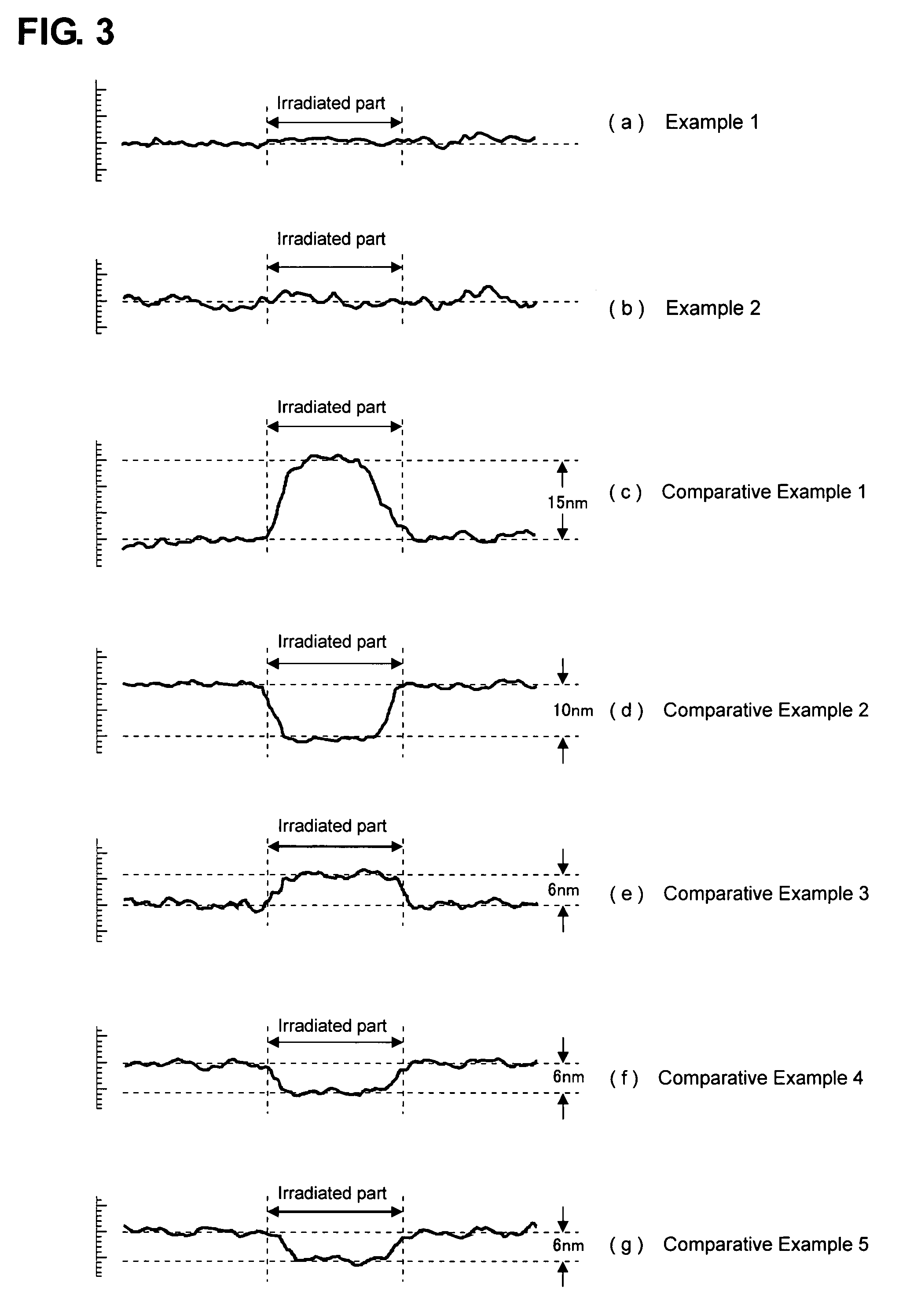Optical synthetic quartz glass and method for producing the same
a technology quartz glass, applied in the field of optical synthetic quartz glass material, can solve the problems of quartz glass damage prone to be caused by laser irradiation, affecting the imaging property, and worsening the light transmission
- Summary
- Abstract
- Description
- Claims
- Application Information
AI Technical Summary
Benefits of technology
Problems solved by technology
Method used
Image
Examples
example 1
[0092]Silicon tetrachloride was subjected to a distillation treatment to remove impurities and was used as a material to prepare a porous quartz glass mother material in a column of 300 mm outer diameter and 1200 mm length by a CVD method [step a)].
[0093]The porous quartz glass mother material was subjected to a thermal treatment for 6 hours at 1173 K in He gas containing 0.01% by volume of SiF4 and, after that, subjected to a thermal treatment for 8 hours using He gas containing 20% by volume of oxygen keeping the above temperature [step b)]. After cooling, the porous quartz glass mother material was placed in a vacuum furnace equipped with a carbon heater and heated up to 1853 K under a vacuum condition of 2.5 Pa to give a transparent glass [step c)]. The resulting transparent quartz glass was a transparent quartz glass in a column having 180 mm outer diameter and 800 mm length.
[0094]Both ends of the resulting transparent quartz glass were fused to a support rod made of quartz gla...
example 2
[0110]A porous quartz glass mother material in a column of 300 mm outer diameter and 1200 mm length was prepared by the same method as in the step a) of Example 1 except that a highly pure tetramethoxysilane was used as a material.
[0111]The porous quartz glass mother material was subjected to a thermal treatment for 4 hours at 1273 K in He gas containing 0.02% by volume of SiF4 and then subjected to a thermal treatment for 8 hours with He gas containing 20% by volume of oxygen keeping the above temperature [step b)]. With regard to the treatments after that the step c) to the step e) were carried out under the entirely same condition as in Example 1 to give quartz glass in the same size as Example 1.
[0112]In the final step f), a treating condition was somewhat modified so as to set the hydrogen concentration lower than in the case of Example 1. The quartz glass was allowed to stand for 1500 hours at 673 K in nitrogen containing 10% by volume of hydrogen gas of 0.01 MPa pressure so t...
PUM
| Property | Measurement | Unit |
|---|---|---|
| fictive temperature | aaaaa | aaaaa |
| thickness | aaaaa | aaaaa |
| thickness | aaaaa | aaaaa |
Abstract
Description
Claims
Application Information
 Login to View More
Login to View More - R&D
- Intellectual Property
- Life Sciences
- Materials
- Tech Scout
- Unparalleled Data Quality
- Higher Quality Content
- 60% Fewer Hallucinations
Browse by: Latest US Patents, China's latest patents, Technical Efficacy Thesaurus, Application Domain, Technology Topic, Popular Technical Reports.
© 2025 PatSnap. All rights reserved.Legal|Privacy policy|Modern Slavery Act Transparency Statement|Sitemap|About US| Contact US: help@patsnap.com



